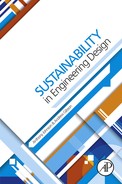Engineering Design
An Overview
Abstract
This chapter deals with the basic questions of what is meant by the term design in engineering terms. It considers the typical external forces that drive design and the internal activities and feedback iterations that constitute the design process.
It then goes on to consider how technology has impacted on this process and led to design evolution, and closes with an introduction to the triple bottom line concept.
1.1 What Is Design?
Design encompasses many fields and can be described as a creative process that brings into being a new product, concept, or process using subjective or qualitative means.
A new design may start in several ways. Often there is a need for an item or a service that leads to a new specification. This specification is followed by a new design and eventually a new product. This approach to a new design may be considered “necessity led.” A notable example is the heat shield fitted to the National Aeronautics and Space Administration (NASA) space shuttle. The need to reenter Earth’s atmosphere and protect the spacecraft from the extreme high temperatures led to a specification (essentially the brief) and the eventual development of a reusable heat shield.
It is rare that a brand-new product is designed without the presence of “need,” although there is a notable example in the laser. In 1917 Albert Einstein established the theoretical foundations for the laser, but it was not until Theodore H. Maiman [4] operated the first functioning laser in 1960 that the technology became a reality. This “technology-led” innovation was a system requiring a product. In the intervening years, lasers have become commonplace for optical measurement, CD and DVD players, level sights, and much, much more.
Inventions are often ideas of an individual who is completely unrelated to the topic of the invention in what is sometimes called a blue-sky moment, often the result of a previously unperceived need. A great example is when Andrew Speechley was late for a meeting in Halifax, UK, and could not find a parking place. In a blue-sky moment, he imagined the three-dimensional space above the normal car park filled with parked cars. Later, at home he built a model showing the means of parking one car above another. He had just invented the car stacker. Plate 1.1 shows the concrete base version of Speechley’s invention.
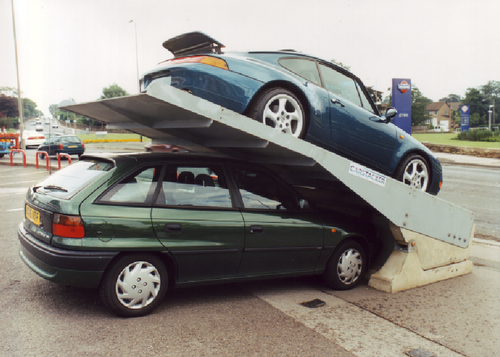
Plate 1.1Carstacker Mk2 with Concrete Base [3]
By whatever means, once there is a need and an idea to fill that need, a product has to be brought into existence. At the first attempt, this product is often very crude and may not work efficiently. Often, to become a sophisticated item, a product requires further development with newer techniques and alternative materials. This further development, building on the original prototype, is usually an evolving process whereby feedback from the user is fed back to the design team. When new information is received, the designer returns to the concept to introduce new elements and further enhance the product concept design.
The bicycle is one of the best examples of design evolution. The first bicycle was originally a wooden frame with two wheels and something by which to steer. See Plate 1.2. Several iterations later, a chain drive was added, and further refinement led to lightweight frames, suspension systems, better brakes, and so on.
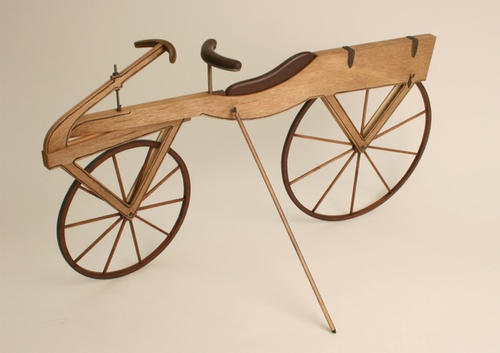
Plate 1.2Laufmaschine: One of the First Bicycles [1]
A modern concept bicycle is shown in Plate 1.3. This product incorporates lightweight materials streamlining and inbuilt suspension systems and has a mass that is a fraction of the original concept shown in Plate 1.2.
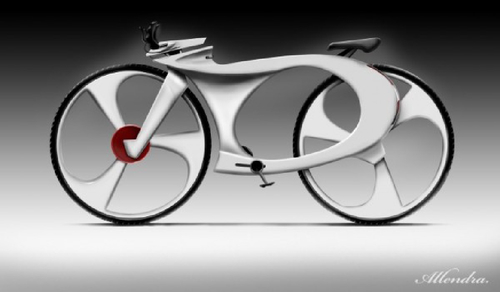
Plate 1.3Modern Concept Bicycle (fuelyourcreativity.com)
1.2 Definition of Design and Overview of the Design Process
The implication of the word design is a very familiar concept. It embodies the creation and development of all the products, tools, and systems that we use every day. Every product in use has first to be designed, but there is a definitive process all developments go through to reach a conclusion.
The new product first has to be imagined, then communicated, designed and finally developed and produced. The basic design process model is illustrated in Figure 1.1.

Figure 1.1Basic Design Process Showing Feedback Evolution [3]
Most products are developed because there is a market need, or perhaps a market has been identified. A great example of new market identification is the development of the Apple iPad. This was the first tablet computer on the market and was made possible because of its touch-screen technology. The marketing team at Apple had perceived that there was a need for such a computer by identifying a market gap. Development soon followed.
The Apple marketing team developed a specification for the new tablet computer gleaned from market sources, such as personal interviews, questionnaires, stockist (retailer) responses, and the like. The specifications were then communicated to the design team, each member of which would have had his or her own personal “mind’s-eye vision” of the new tablet computer.
Communication of the product specification to each member of the design team—perhaps as sketches or 3-D computer visuals—was then essential. This communication was not limited to the pictorial view of the tablet; there would have been much discussion of how to achieve the technical aspects, such as electronics, touch-screen inclusion, software, and materials. There would also have been much discussion around patents and general management of the design process.
Within this discussion new information would have come to light through new design ideas and research. This new information engaged the design team in evolving certain elements of the concept design. Feedback such as this is essential. Communication of information and ideas is essential for a true concept to be developed.
The design had to pass through concept stage and renewing of the specifications of the finished product, but then it could be manufactured, first as a prototype, then as a preproduction model. Development would also have included specialist tools, production lines, and perhaps even new factories.
The new device then needed to be marketed. The marketing process included marketing strategies, segmentation, marketing communications, packaging, and distribution.
1.3 Design Activities
Engineering design combines many disciplines and processes. The design process diagram in Figure 1.2 shows the variety and scale of activities and eventual outputs from the design process.
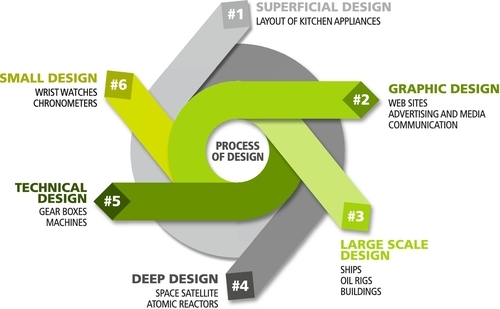
Figure 1.2The Scale of the Design Process [3]
Engineering design is an enormous subject, stretching from miniature design such as the design of chronometers and watches to the other extreme of large-scale design such as that of oceangoing ships.
The design engineer who is in the process of designing highly technical components is steeped in the discipline of selecting materials, tolerances, surface finishes, seals, and the like so that the components can be combined into perhaps a gearbox or an engine. This is one end of the technical design scale; at the other extreme the graphic designer applies his or her particular visual design skills on areas such as Web sites, advertising media, and business logos to communicate to the market.
Design perception is yet another aspect of design that encompasses the individual view. The word design is a familiar word and certainly a familiar concept, since it covers a huge range of creative activity. The householder who has “designed” his kitchen has exercised a form of design but has merely positioned the kitchen appliances and cupboards by moving cardboard cutouts around the sketch of a floor plan. This is really superficial design, or “design light.”
At the other extreme there is deep design, which includes the involvement of many people in creating highly technical and large-scale design developments such as space satellites, atomic power stations, and jet aircraft.
The vastness of scale of the design process is illustrated in Figure 1.2. Designers cannot conceivably become designers across the whole range of design possibilities. Designers must become specialists in a particular field, although that field may be very broad. For instance, the designer whose expertise is the design of mechanical diggers may also apply those skills to other tracked vehicles such as cranes. Conversely, atomic power plant designers would not have the specialized skills to design high-speed aircraft.
The scale of design is therefore vast; however, across this enormous subject of multiple disciplines, there are common features in the process of design. The major common features are as follows:
• General approach to design
• Design information
• Design evolution
• Designer skills and attributes
• Design information output
• Attention to detail
• Design within the awareness of the whole picture
• Three basic design objectives related to the triple bottom line
1.4 Design Information
It is said that “information is the currency of design.” Design would not happen without the inward flow and outward flow of information. The designer commences with sometimes a very tenuous brief, which has to be thoroughly investigated to tease out the important information and determine basic requirements. Research is then performed to gain even more information so that concepts can be generated. During this process the designer produces more and more information pertaining to the task in hand. At some point the designer has to communicate this information so that other specialists may add their own input to the project. This information flow is outlined in Figure 1.3, which shows the design information process model.
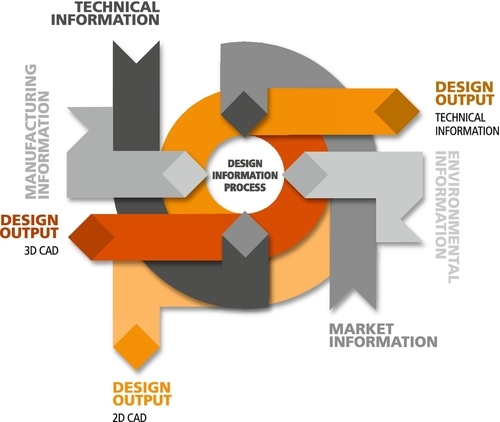
Figure 1.3Design Information Process Model [3]
Information the designer may use can take many different forms. In the early stages of a project, the information may relate to the shape and function of the product. In later stages of the design, the product information will take the form of component specifications or perhaps manufacturing methods. The design of the arm of a digger might depend on the size and specification of a hydraulic ram. Specific ram sizes are required; otherwise the designer cannot complete the envelope within which the ram will fit.
Here is an example of the later stages of the design process: A designer is creating a lifting device that will lift a mass of 250 kg a distance of 2 m. The designer has several options for actuating the lifting device and requires the specific information for the different forms of actuation before the design process can progress. Information on the various actuation systems is as follows:
• Electric motors, sprockets, roller chain
• Electric motors, pulley, steel cable
• Hydraulic power pack, hydraulic rams
• Pneumatic compressor, pneumatic rams
The selection of the actuator depends on many factors. Further information is the key to selecting the appropriate method.
If the device were to be placed in a factory environment, hydraulics or pneumatics could be used. These would be straightforward to maintain, with easy access to specialist personnel, and the noise that each method delivers would normally not be a great problem.
Conversely, if the hydraulic or pneumatic device were to be placed in a domestic environment, the noise levels would not be acceptable. Furthermore, the maintenance and general dirt contamination of the hydraulics device would prohibit its use. Pneumatics may be clean, but the compressor would also be noisy and therefore may not be acceptable in a domestic situation. Here, therefore, further information on the specific environment needs to be input to the concept design.
The electric motor options would be preferable, but the designer’s choice has to be between roller chain or cable actuation. The cost of each system would probably be the deciding factor; however, each system would need to be analyzed in depth using specific product information.
It is clear from this example that a designer requires access to information from many different sources in order to complete the design prior to manufacture. Information relating to final destination of the product, usage, maintenance procedures, and so on is necessary for the designer to formulate an efficient design that is suited to the application.
Toward the end of the project when the designer is specifying components, the critical required information could be the size of a hydraulic ram or the physical envelope and power output of a diesel engine. Manufacturers and suppliers are usually very efficient and willing to supply design information that, after all, will help sell their equipment.
For many years, component suppliers have realized the critical nature of design information and its necessary ease of access to the designer. Many suppliers now give free access to a database of components that can be downloaded directly into the designer’s 2-D or 3-D computer-aided design (CAD) model. Such standard components as bearings, seals, gearboxes, engines, and many more can be imported in this way. It is human nature that the designer will tend to use components for which the technical details are easy to access and insert. Component suppliers pander to this human tendency.
1.5 Design Evolution
Sophisticated designs are usually the result of design evolution. An unsophisticated first design will usually have been developed from initial sources of information, usually from a basic need. During the lifetime of the first product, information in the form of new processes, better materials, and feedback from the product’s use will then provide impetus to further develop the design.
This evolutionary process continues as new information is received, both before and after a new product is launched. The product will go through subsequent changes as it is used and as feedback is disseminated. Feedback is important because it tells the designer how to modify the product to elicit improvements.
An excellent example is the development of the passenger vehicle. The motorized carriage shown in Plate 1.4 was originally developed from horse-drawn carriages.
Engines and power transmission devices were first introduced to a driving axle. The result was a horseless vehicle that possessed a top speed of about 12 mph.
Several other engineers were working on gasoline-powered automobiles, but it was Karl Benz who first patented his work and is generally credited as the inventor of the gasoline-powered automobile.
During the 20th century, technological developments took place through design evolution. Engine design was improved along with suspension systems, vehicle structures, tires, brakes, fuel, and a plethora of other devices and systems. The subsequent improvements increased safety, improved passenger comfort, and improved vehicle efficiency. The gas-powered vehicle became a sophisticated people carrier. This happened only because information became available through research, opinion, and trials, which eventually led to the evolution of components and systems.
Sophisticated information-processing systems within computer databases now make it possible to design vehicles that will reach 1,000 mph (Mach 1.42). Information manipulation, especially in terms of analysis, has made it possible to develop designs that would have been unachievable using hand calculations and other manual processing techniques such as graphical synthesis.
By comparison with the Benz motorwagen, modern vehicles are extremely advanced. A modern example of a sophisticated vehicle is the Bloodhound SSC 1,000-mph car, shown in Plate 1.5.
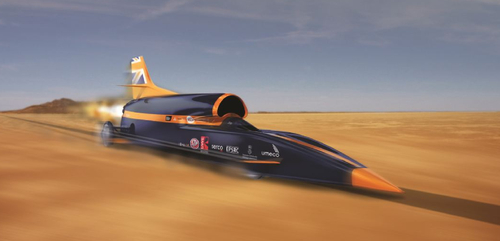
Plate 1.5Bloodhound SSC 1,000-mph Car (www.bloodhoundSSC.com)
Many elements of this vehicle require state-of-the-art analysis. One of those elements relates to aerodynamics. Much of the prediction of the airflow around the vehicle at speed is due to a technique called computational fluid dynamics (CFD). CFD is a sophisticated computational technique that creates tiny imaginary elements around a vehicle. This is termed a finite element mesh. In the case of the Bloodhound SSC, 10 million elements were created along the length of the vehicle body.
As fluid flow (air) enters an element and then leaves the element, it transfers the velocity, direction, and pressure to the next element. As the shape of the vehicle develops from a pointed tip at the front of the car to the full body of the car, individual elements record changes to the pressure, velocity, and flow direction. In this way the parameters of the airflow over the surface of the vehicle can be computed and predicted.
The computation of 10 million finite elements is far beyond the capability of human analysis. The Bloodhound team enlisted the assistance of the Swansea University Department of Engineering, which developed a supercomputer to handle the data. Initially the computation spanned four days. Additional sophisticated computing power reduced the time to a little over four hours.
CFD output is shown in Plate 1.6, which shows a motorcycle helmet modeled as a finite element mesh. Within the software, fluid of the density of air is blown onto the crash helmet from the left. The discoloration around the rider’s neck area shows pressure, velocity, and direction disturbance as the air leaves the helmet. Analysis of this data allows the designer to change the helmet shape and, in so doing, to smooth the fluid flow. This leads to lower “noise” and reduced fluid drag.
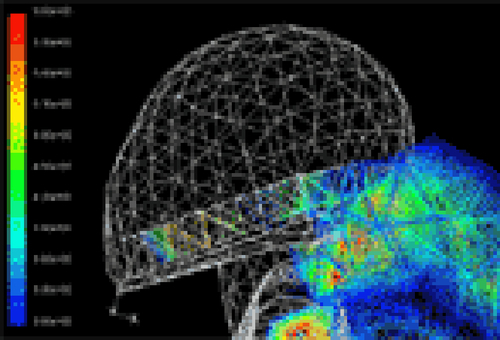
Plate 1.6CFD Analysis of Airflow Around a Motorcycle Crash Helmet [3]
Using modern analysis tools, sophisticated designs can be created that could only be dreamed of a few years ago.
1.6 Design Information Output
Having processed the information to create a design, the designer needs to communicate that information. This is done in many ways:
• Verbally
• Written technical report
• Two-dimensional drawings
• Three-dimensional models
• Animations and simulations
• Analytical information
• Parts lists
• Bought-out component specifications
Once the information is obtained, applied, and manipulated, the designer requires high-level skills to impart this information to other specialists such as product engineers and marketing specialists. In the modern design and manufacturing environment, in-depth knowledge and use of 2-D CAD and 3-D CAD software are essential to the information dissemination process. CAD software can perform several duties for the designer above and beyond providing 3-D models and technical 2-D drawings.
Packages built into CAD software allow stress analysis, dynamic analysis, deflections, and thermal analysis to be calculated. These sophisticated tools provide high-level information that can be used to disseminate the design information to specialists such as buyers, production engineers, marketing personnel, packaging personnel, and many, many more.
A further development of 3-D modeling has been 3-D printing, in which 3-D models and products are produced by an additive rather than subtractive process (e.g., machining). Layers of product are laid down to build a solid 3-D object in the chosen material.
It can be seen that information in several forms is paramount to any design process and can be summarized as follows:
1. Initial information allows the design to begin.
2. Research information allows the design to unfold
3. Expertise information allows the design to develop.
4. High-level information manipulation techniques allow the design to become sophisticated.
5. Analytical output information allows the design to be performance predictable.
6. Information output methods allow the design to be disseminated.
7. Technical manufacturing information allows the design to be produced.
1.7 Qualities of the Designer
The engineering designer needs to have a mindset that allows creativity. An open mind and a willingness to investigate solutions from different environments and disciplines are necessary so that simple, effective, and often radical solutions may be designed into a product.
Design is a process that brings together many different disciplines. The designer needs to have an awareness of these disciplines and perhaps be a specialist in several of them. His or her skills and attributes are reflected in the general design model and are shown in Figure 1.4.
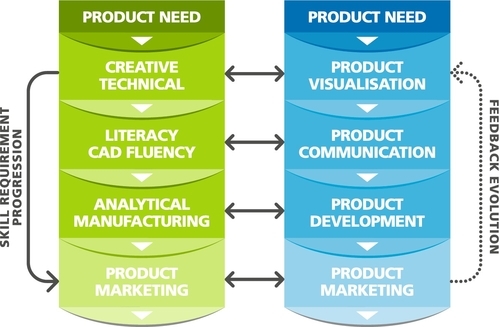
Figure 1.4Designer Skills and Attributes Related to the Design Process Model [3]
At the beginning of a project, the designer needs to be creative yet technical, skills that are often in conflict with each other. At the launch of the project, the designer’s ideas and concepts have to be unlocked from his mind and disseminated to other team members. This can only be achieved using communication skills in the form of the written word or sketches.
A large element of information dissemination requires the creation of 2-D and 3-D models and, of course, technical drawings. These are not just pictorial representations of the product. They represent a communication tool that describes precisely how the item should be manufactured in terms of shape and size and how it should be precisely assembled. This is absolutely essential for manufacturing to take place, and it is the designer who possesses the skills to create this precise information.
Further along the project, during the manufacturing and development phase, technical details such as material selection, tolerances, stress analysis, and component selection (e.g., bearings or seals) have to be applied. These precise details are usually communicated to the manufacturing function through analytical output, 2-D drawings, or CAD models.
The new design is the brainchild of the designer or the design team. During the design process, the designer must apply her own working knowledge of materials, processes, and manufacturing possibilities. It is the designer who is the vessel for the detail data for bearings, seals, materials, strengths, and all other elements that constitute a full and proper design. It is therefore the designer who is best able to create the drawings and models that will precisely describe the components that make up a product.
True design at a detailed level requires a great deal of skill across many disciplines. The lone designer, however, may not possess the specialist knowledge of all the fields required to create a successful design. He must therefore be aware of his limitations and seek advice from other specialists. In this quest for multiple disciplines, the designer may need to form a multidisciplinary design team that can bring the product design to a successful conclusion.
1.8 Attention to Detail
A major aspect that pervades the whole working ethic of the designer is that of attention to detail. Every single minute detail of specification for a design needs to be communicated. This attention to detail may be tedious, but it is of absolutely paramount importance. The designer must think of everything!
The designer creates value while in the process of generating new designs. The designer has to think through the manufacturing process and specify parts and components used during manufacture. The detail the designer provides has to be absolutely precise. There must be no allowance for guesswork by the manufacturing team. Guesswork can only lead to wrongly specifying components or costly mistakes.
The cost of a product is based on the parts list the designer provides. Parts that are omitted from the parts list cannot be counted as part of the cost. Furthermore, components such as jigs may be required to aid assembly, and they must also be costed. The minutest detail must be considered. Perhaps a cable tie is temporarily required to hold components together to aid assembly. This cable tie may be cut and discarded once the components are assembled, but it does cost money and it should appear on the parts list.
A single hydraulic fitting worth £3.00 may be omitted from the parts assembly pack for an installation that could be worth £100,000. This could mean that pipe work could not be completed and the installation could not be commissioned. This single fitting could cost hundreds of thousands of pounds in lost revenue simply because its absence delayed commissioning.
The same is true of lubricants. Often lubrication delivery systems or even lubricants are the last item to be considered. Sometimes they are not considered at all, resulting in overheated bearings, seizures, and very expensive downtime. The only person who can specify the type of lubrication delivery system, lubricant, and quantity is the designer. Attention to such detail at the design stage reduces problems in manufacture and further losses of the product in use.
1.9 The Whole Picture
Sometimes the design is extremely complex and is impossible to visualize completely. Modern 3-D CAD assists the designer immensely in visualizing the whole picture. These CAD systems are equipped with collision detection, which throws up an error message should one component infiltrate the same space as another component. Components can be fitted within the 3-D computer environment before manufacture. This results in low-cost prototyping. The build of full-size prototypes is usually a very expensive process.
A World War II British bomber, the Avro Manchester (see Plate 1.7), could be considered a prototype aircraft and was the forerunner of the Avro Lancaster bomber (see Plate 1.8). The Manchester was a twin engine bomber but suffered greatly from underpowered engines and aerodynamic instability.
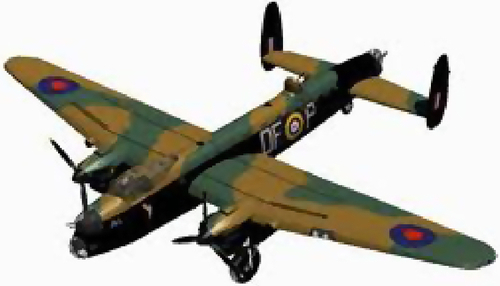
Plate 1.7Avro Manchester Bomber [6]
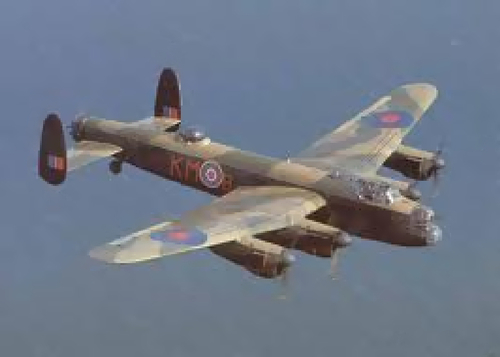
Plate 1.8Avro Lancaster Bomber [5]
The practical building and testing of the Manchester enabled the Avro engineers to ascertain its faults and enhance the design by discarding the original Vulture engines, extending the main wingspan, and adding four Rolls-Royce Merlin engines. Further modifications were made to the tailfin arrangement. The result was the Lancaster bomber, which was much more powerful and had a better aerodynamic response. At the time these aircraft were designed, the difficulties in visualizing a complex product were solved by building an expensive full-size prototype.
Even the best modern designers cannot see the whole picture and require feedback from users of the product and the manufacturing team so that elements can be modified to function more efficiently. Feedback from product users is very important. Often the product in service throws up problems that might not have been considered during the design and manufacture phase. Designs may need to be further modified to incorporate this new information.
A classic case of feedback in use and further modification is the London Millennium Footbridge across the River Thames (see Plate 1.9). This is a radical design of a steel suspension bridge. Pedestrians crossing the bridge felt unexpected swaying motion within the first two days of the bridge’s opening. The phenomenon that caused the resonance was identified as “synchronous lateral excitation.” The natural swaying motion of people walking across a bridge caused small sideways oscillations, which in turn caused people on the bridge to sway in step, thus increasing the amplitude.
Resident vibrational modes in bridges are well understood in bridge design, but in the case of the Millennium Bridge the lateral motion caused by pedestrians was very unusual and was not anticipated by the bridge designers.
In this case, feedback from the bridge users led to the closure of the bridge until modifications could be made. The bridge designers applied much research and testing to the bridge structure, gleaning information that led to appropriate modifications. Thirty-seven viscous dampers were attached to the underside of the structure, reducing the oscillations to a tolerable level.
1.10 Classic Engineering Design-to-Manufacture Model
The classic engineering design-to-manufacture model has been used for thousands of years, and though some elements of sustainability have been practiced, the mindset and pressure on many modern engineers are to design the product so that it can be manufactured at a low cost (see Figure 1.5).

Figure 1.5Classic Design-to-Manufacture Model [3]
Under normal circumstances, the design engineer would receive a brief and create a target specification, which is often no more than a wish list. This gives the designer or the design team a target toward which the design process should be steered. The designer should fully understand what the brief conveys, perhaps performing some analysis and research before arriving at a concept design.
The concept would then be scrutinized further to provide a concept specification, which is much more detailed than the target specification, since it includes performance feasibility. The concept data provides the design and feasibility information with which to make progress decisions. These are usually financial decisions and a commitment to fund the prototype manufacture. Large products such as ships are basically too large and expensive to simply prototype. The concept design becomes the product in such a case. Smaller products such as automobiles are usually prototyped, then modified before being put into production.
The concept stage is, therefore, a very important phase of the design process, and once accepted, work can begin on converting the feasibility design into a working design.
The working design is achieved by further analysis but also by specifying components such as bearings, seals, motors, hoses, and whatever else is required to complete the product. The designer would draw on the thousands of components that are commercially available and apply them to the design, finally completing either 2-D or 3-D computer models and providing a detailed parts list. The parts list is really a shopping list of raw materials and components and is an important part of the information dissemination. The production team uses the parts list and the drawings in combination in order to manufacture the product.
The design-to-manufacture model shown in Figure 1.5 is the classic approach that has been used by designers for thousands of years. The designer conceives the component, which is then manufactured and sent to the client. In modern times there are increasing pressures on the designer to consider material sourcing and environmental impact through the life of the product right through to its disposal.
1.11 Overall Design Objectives and the Triple Bottom Line
1.11.1 Overall design objectives
Let’s take a step back from the design and manufacture of a product and ask the question, What is the main objective?
The designer will design and eventually manufacture a product, but subconsciously he is trying to achieve several unspoken objectives:
Objective 1: To create profit for the company (the designer can then be paid a salary).
Objective 2 To create a product that will enhance the lifestyle of other human beings.
Objective 3: To achieve sustainable development of the whole product life cycle.
The first two major objectives have been in every designer’s subconscious since the cavemen first used clubs. In modern times there is now a third objective, which is to use as few resources as possible.
These three objectives now form the basis of a relatively new term: triple bottom line. A designer should now consider all three objectives when he is confronted with the design challenge.
1.11.2 First bottom line: profit
Any business needs to make money. Some businesses are perhaps nonprofit making, such as charities, but even these businesses need to make a return on their efforts to fund growth and development. Generally, businesses need to make a profit in order to progress and survive.
Early British industrialists, the architects of the Industrial Revolution, were driven by the need for increased output to satisfy the demands of the growing markets within the British Empire. As a result of applying new techniques and materials, they were able to derive a greater financial return on investment in fixed and current assets. Basically, they became wealthy.
This is the reason businesses survive. They have to make money to buy raw materials, to pay workers, to expand, and to make the owners wealthier. Making profit is the primary goal of any business and is the first bottom line: profit.
1.11.3 Second bottom line: people and society
During the British Industrial Revolution, some industrialists, such as Titus Salt and George Cadbury, developed a social conscience, seeking to improve the “lot” of their workers by housing them in model villages, educating their children, and even investing money in improving safety in the manufacturing process.
The latter-day social conscience stretches to design and manufacture of products that aid and enhance people’s lifestyle. The advent of the car has improved communications and the transport of goods by using mechanical power. The computer has improved communications for business and for personal use. Perhaps the biggest social improvement in recent years has been the development of the cell phone. This personal communicator has many functions that enhance the owner’s sociability; in the developing world this device has helped improve local trade, and hence the standard of living, of cell phone owners.
Engineering design, therefore, has played a huge part in enhancing the way people live and work. This has become the second bottom line: people and society.
1.11.4 The third bottom line: environmental impact and sustainability
The growing awareness and need to take care of the environment have led some designers to adopt a more sustainable and open approach to their design work. These enlightened designers adopt a whole-life approach. This means they have to consider all aspects of the product, from the sourcing of the material right through to its disposal at the end of its life. The following is a list of topics within the whole-life approach that designers need to consider:
• Sustainable material sourcing
• Sustainable design techniques
• Design for sustainable manufacture
• Design for sustainable use
• Design for sustainable maintenance
• Design for sustainable disposal
Sustainable material sourcing has been practiced in some quarters for many years. In the United Kingdom, when purchasing hardwoods for use in, for instance, street furniture, government agencies have required certificates to show that the wood intended for external seating has been sourced sustainably.
Sustainable manufacturing can be achieved through different techniques and methods, but a wider picture needs to be adopted, such as the use of smart factories. These are low energy use, low environmental impact factories. Some forward-thinking companies have incorporated these low-impact factories within their manufacturing profiles.
Examples of smart processing include the use of waste materials from the manufacturing process to generate heat and power for the process (e.g., cocoa processing). European Union (EU) funding has been made available under the Factories of the Future Public Private Partnership (PPP) to improve the control systems of “smart” factories, where energy management and efficiency are key considerations in both factory layout and the manufacturing process. Examples of these smart factories include the Brandex apparel factory in Sri Lanka, which uses efficient light-emitting diode (LED) lights for workstations, recycles water and harvests rainwater, and recycles biogas from the factory waste to power the kitchens. The new Renault factory in Tangiers Plate 1.10 has reduced CO2 emissions by 98% through measures such as energy conservation systems, the use of renewable energy resources, and the recycling and harvesting of natural rainwater.

Plate 1.10Renault Smart Factory [2]
The use of a product often has a greater environmental impact than its manufacture or its disposal. A car or a truck is just such a product; its day-to-day use—burning fossil fuels and the incumbent emissions—creates an environmental impact much greater than that produced during its manufacture or its disposal.
Vehicle designers, however, have for years been striving to reduce the mass of vehicles, thus reducing the fuel burned during the vehicles’ productive lifetimes. In the early years of this process, the goal was always to reduce the running cost, but this also improves the sustainable impact, since a reduction in fuel use is also a reduction in environmental impact.
Electrically powered vehicles have been predicted to be the transport of the future. Though they have an environmental impact during manufacture and disposal, the electric motor drive does not directly burn fossil fuels. Though some fossil fuels are used to generate electricity on which the vehicles will run, developments in fossil-fuel-free power generation are already in place or are in development. The advent of the electric vehicle can be considered a major pointer to true sustainable use and reducing environmental impact.
Maintenance has always been essential to prolong the life of products and has largely been necessary to reduce the cost of purchasing new products. Maintenance of a product can now be considered a major sustainability tool, since prolonged life means lower environmental impact by avoiding the procurement of new items.
Although designs for industrial plant, equipment, and machinery have included ease of maintenance in their design briefs, most domestic equipment has become increasingly difficult to maintain as labor rates have tended to make manual maintenance uncompetitive. It requires another shift in design thinking to embrace the possibilities presented by modern materials and methods into designing ease of maintenance back into products.
The motorcycle shown in Plate 1.11 is an excellent example of design for sustainable maintenance. The motorcycle can be taken apart very easily to allow components to be replaced. One major aspect of this design is that it is a simple design that requires only basic tools to enable dismantling.
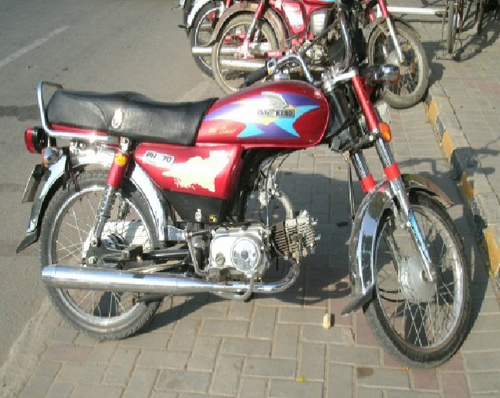
Plate 1.11Motorcycle 70 cc [3]
Though this is an excellent example of design for sustainable maintenance, it is possible that this was not the designers’ primary goal. The market requirement was really for low-cost, single-person transport. Cost was therefore the driving factor for this simple design. Comfort can be taken, however, from the fact that sustainable design often reduces the cost of a product.
Sustainable disposal is often driven by cost. The designer must now consider disposal aspects of products at the concept stage of the design. The design should therefore accommodate easy removal of components and appropriate reuse, recycling, and refurbishment as appropriate.
The vehicle manufacturing industry is a useful example of this practice. Vehicle manufacturers aim for 95% recycling in new vehicles, and of course there is a healthy reuse market for vehicle components supplied by vehicle dismantlers.
The incorporation into the design process of the whole-life model and its consideration at each stage of the design process incorporates the third bottom line: environmental impact and sustainability.
1.11.5 Triple bottom line and design objectives comparison
Though designers are normally working on a practical level in creating products, high-level goals also need to be achieved, as follows:
Objective 1: To create profit for the company
Objective 2 To create a product that will enhance the lifestyle of other human beings
Objective 3: To achieve sustainable design and manufacture
These three high-level design objectives fit well with the requirement to provide a triple bottom line. As was stated above the goals of the triple bottom line are as follows:
First bottom line: Profit
Second bottom line: People and society
Third bottom line: Environmental impact and sustainability
Figure 1.6 shows how the design objectives are combined with business objectives leading to elements of the triple bottom line.
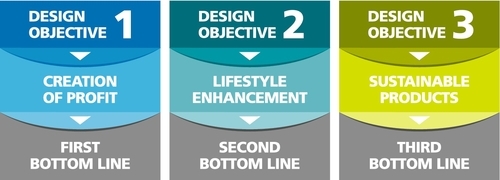
Figure 1.6Major Design Objectives Linked to the Triple Bottom Line [3]
Many companies, especially international companies, are combining sustainability into their design and manufacturing programs. In some notable cases the introduction of sustainable themes has improved the environmental impact of products as well as reducing costs for the company. Sustainability built into a product life cycle also gives marketing potential and provides a feel-good factor for the consumer.
References
1 Open source free from copyright restrictions.
4 Maiman TH. Stimulated optical radiation in ruby. Nature. 1960;187(4736):493–494. doi:10.1038/187493a0 Bibcode 1960Natur.187.493 M. DOI:10.1038%2F187493a0.
6 www.turbosquid.com (2011).secondworldwar.org.uksecondworldwar.org.uk.
